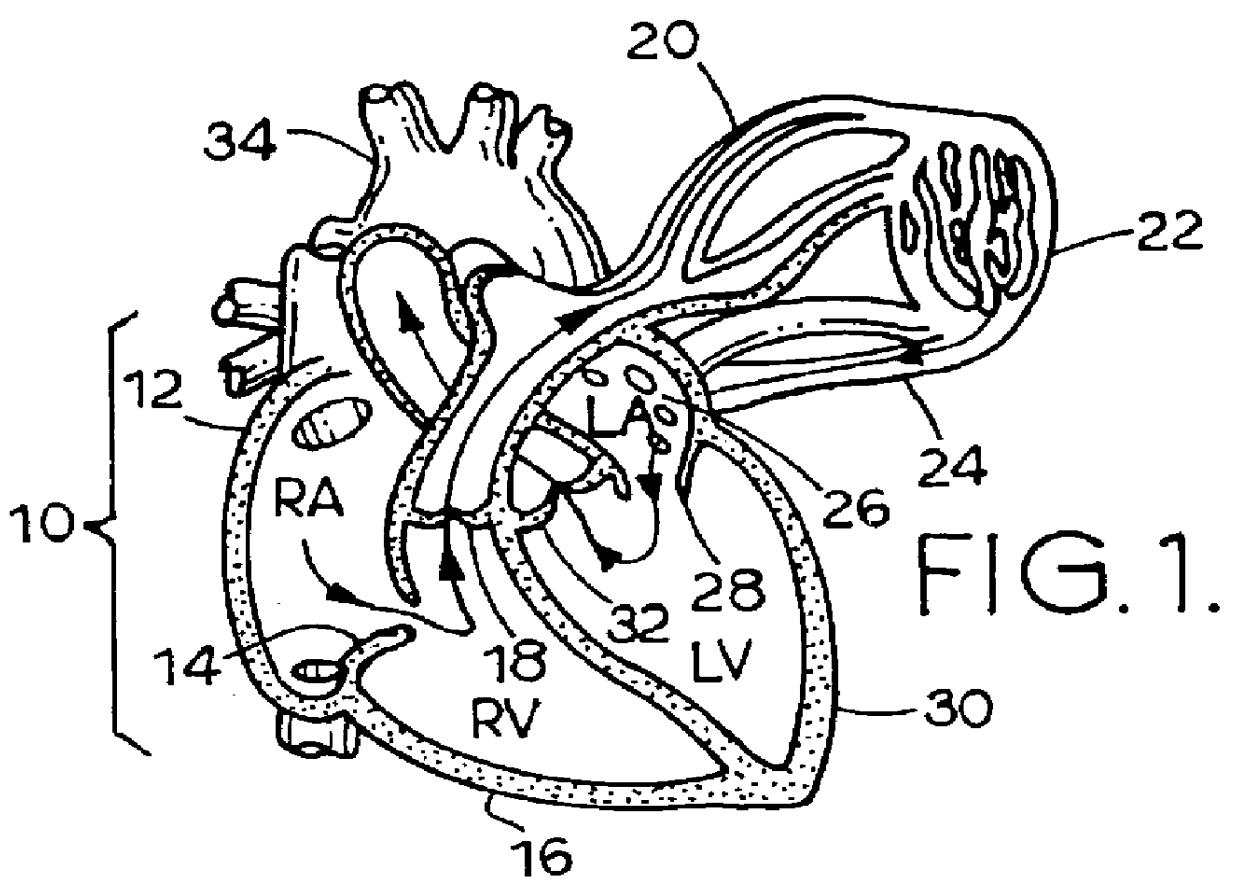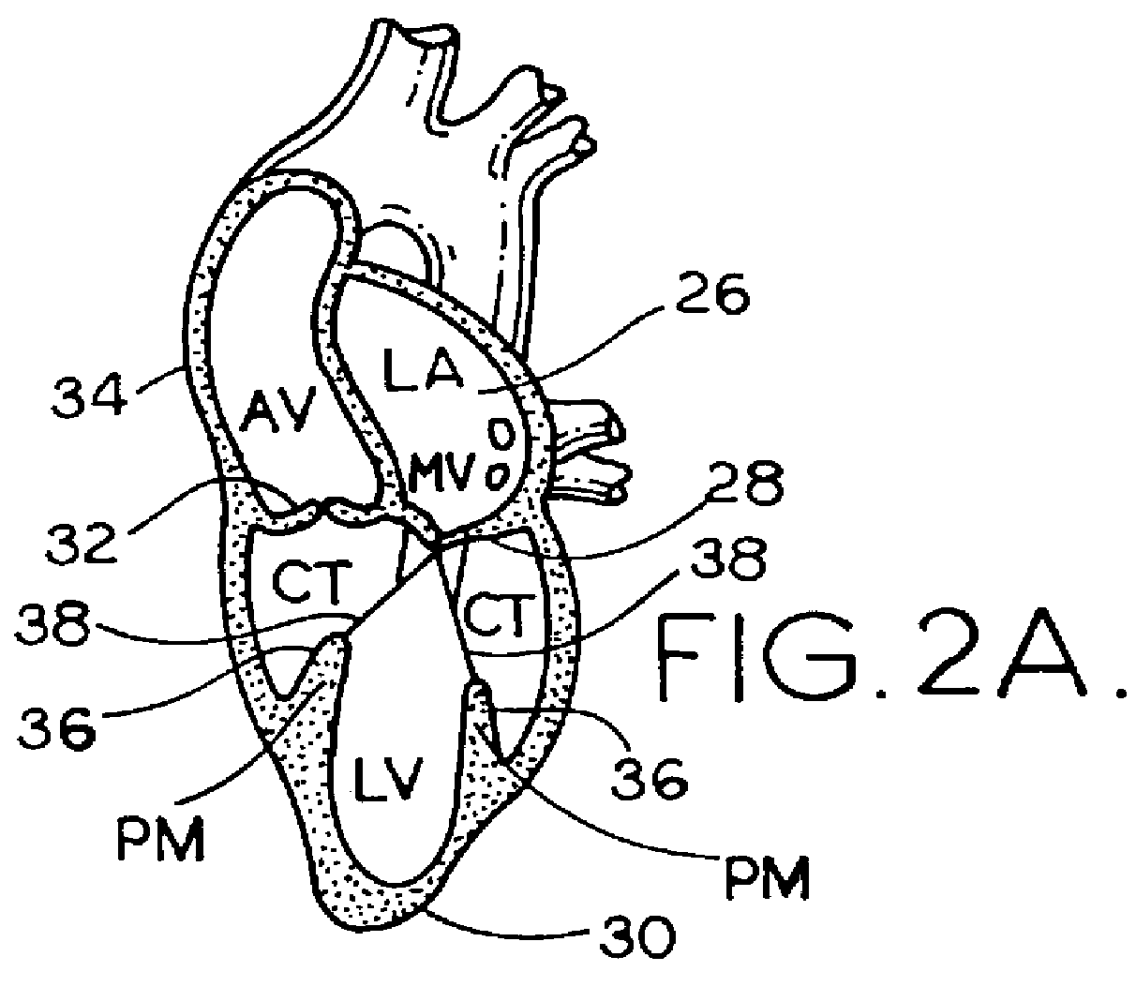Since the heart is stopped, the patient would suffer irreversible damage to the brain and other tissues and organs without the use of the heart-
lung machine to support the general circulation.
Although the heart-lung
machine has been refined, it is particularly toxic to older and debilitated patients and it is expensive.
It is possible to perform surgery off bypass, while the heart is beating and the coronaries are under positive
blood pressure; however, there may be problems.
One problem is that not all vessels are accessible since some vessels are on the posterior or inferior surfaces and that when such vessels are brought into view by lifting the heart, cardiac performance is impaired such that the
cardiac output falls and
blood pressure drops.
A second problem is that the heart moves so that suturing in vessels (12 to 15 stitches in a vessel under 2 mm in
diameter) might be inaccurate and a third problem is that there is blood in the field as the
coronary circulation is not interrupted.
The problem of lifting the heart is not to impair the performance of the heart while at the same time adequately exposing the heart and regionally immobilizing the vessel during
beating heart surgery, and this problem is not solved with any prior art
system.
Lifting of the heart is deleterious to heart function for several reasons.
Second, the heart is distorted.
This shape is much less effective for ejection (the circle is the most effective as it has the highest ratio of volume to
diameter) and flattening also limits the diastolic volume so that inadequate filling occurs.
If the heart is moved improperly, it may go into
fibrillation.
However this is not satisfactory for a beating heart.
However, it is very difficult and tiring to keep the heart in a steady position.
Furthermore, the myocardium in contact with the assistant's fingers may be damaged by pressure, avulsion, and premature rewarming.
Further, the assistant's hand in the operative field can get in the way, and the assistant, who often stands next to the surgeon may
restrict the surgeon's movements.
This presents a serious problem since there are no easy reference points above the patient in which to attach these ties.
While the art has included several inventions intended to support the heart during coronary
bypass surgery of the
circumflex coronary
artery, these inventions have several drawbacks that have hindered their acceptance in the art.
For example, the use of nets to support the heart exposes the heart to fine stands which impinge on the heart and may cause damage.
Furthermore, nets may impede the surgical target and require special techniques or procedures to remove the net from the surgical target area.
Flat cloth tapes are a form of net, and may damage the heart due to a rough texture of the cloth and the small area of contact between the tape strands and the heart.
Further, tapes and similar devices that do not have large surface areas contacting the heart may not support the heart in a uniform manner and may create large pressure areas at the contact points.
In some patients, an additional coronary
blood supply, through the form of bronchial circulation, causes significant hemorrhage during the
bypass grafting process.
This hemorrhage is inconvenient, as it masks the surgeon's view during the delicate suturing process, and threatens the well-being of the patient.
Performing surgery in this manner has several additional drawbacks, including the need to stop the heart, the need to insert special equipment and procedural steps to carry out the function of moving blood through the patient's body while the heart is stopped.
However, the continued operation of the heart will produce problems, in addition to the above-discussed problems, of forming a moving target for the surgeon.
This is not surprising since a median sternotomy and a run on the
cardiopulmonary bypass pump are not well tolerated by some patients, combined with the added cost of coronary bypass equipment and staff.
The procedure results in considerable
recovery time and is associated with a
risk of death and major complication.
If the support is not fit to the particular heart, it may constrict the heart in some manner and thus interfere with the continued output of the heart.
 Login to View More
Login to View More  Login to View More
Login to View More 


